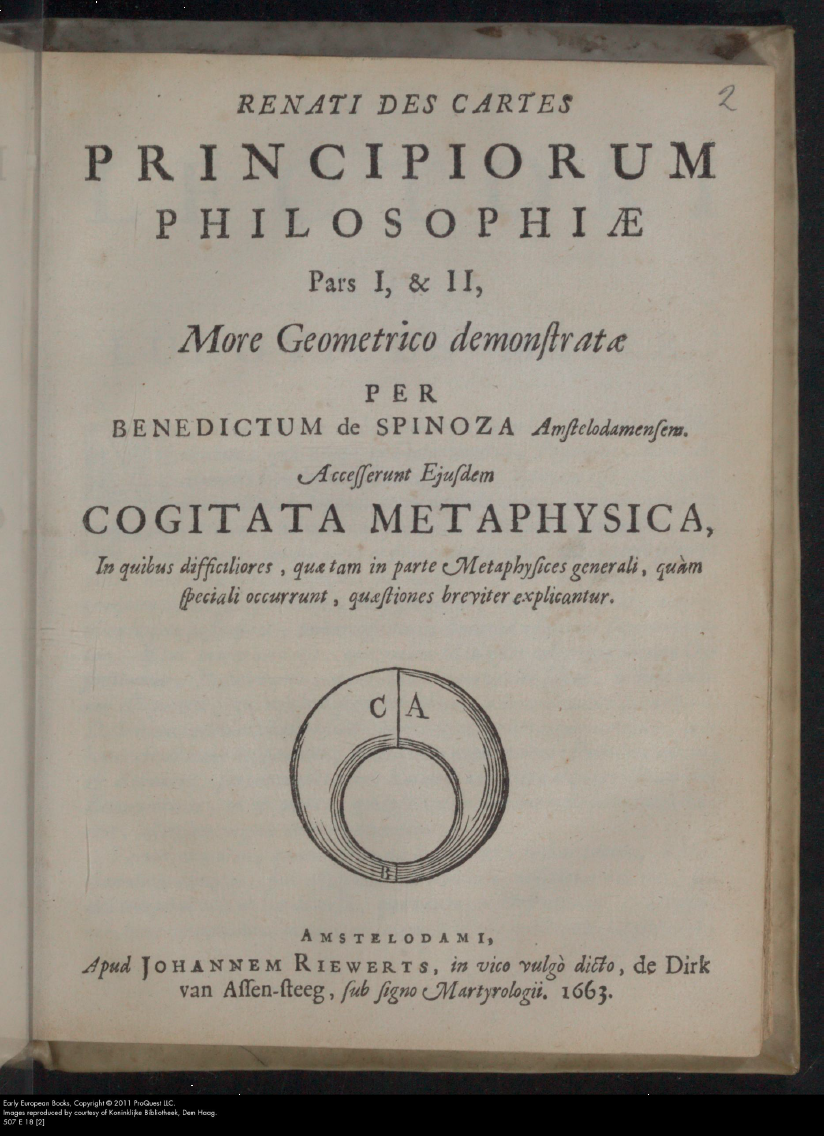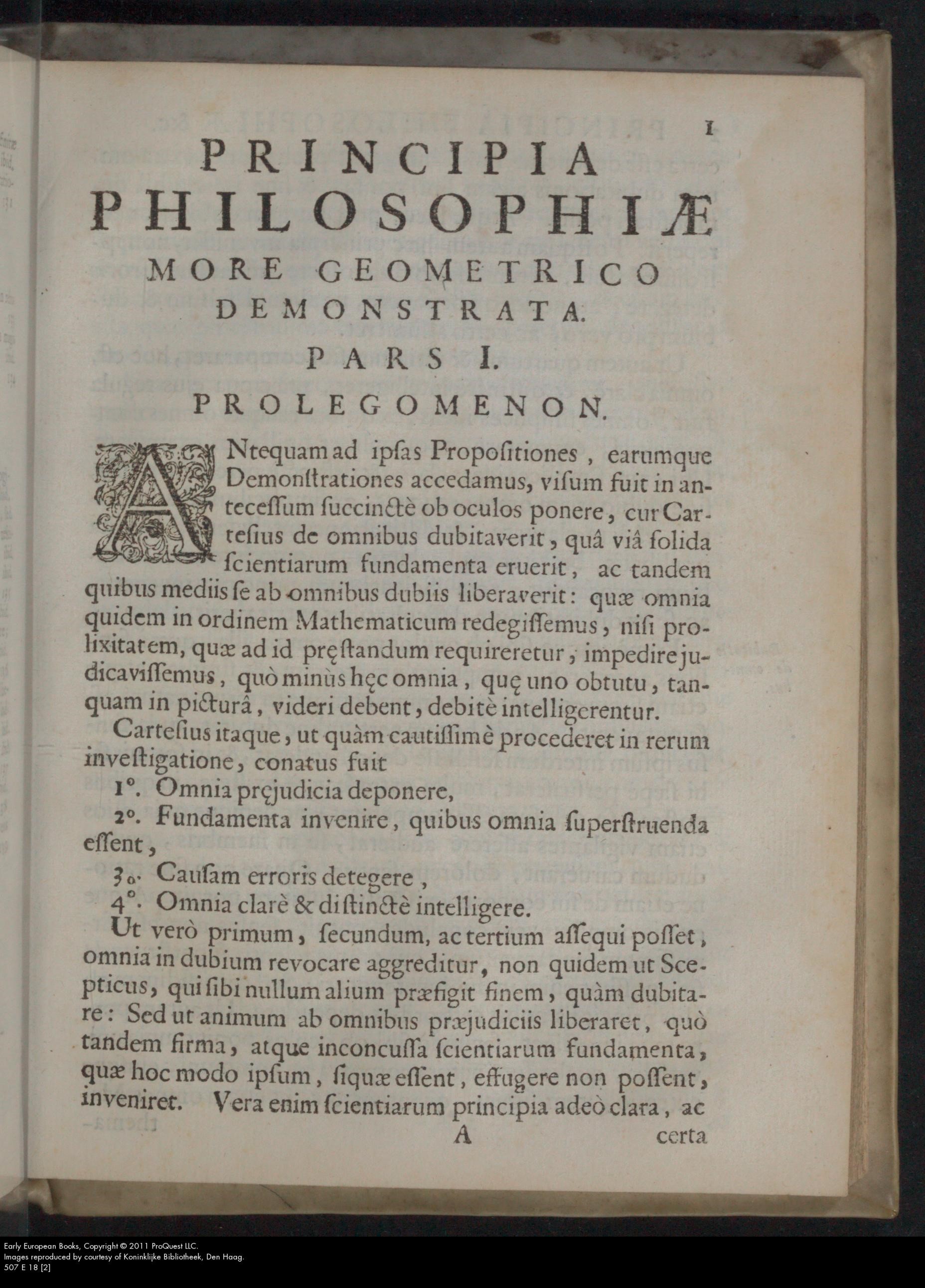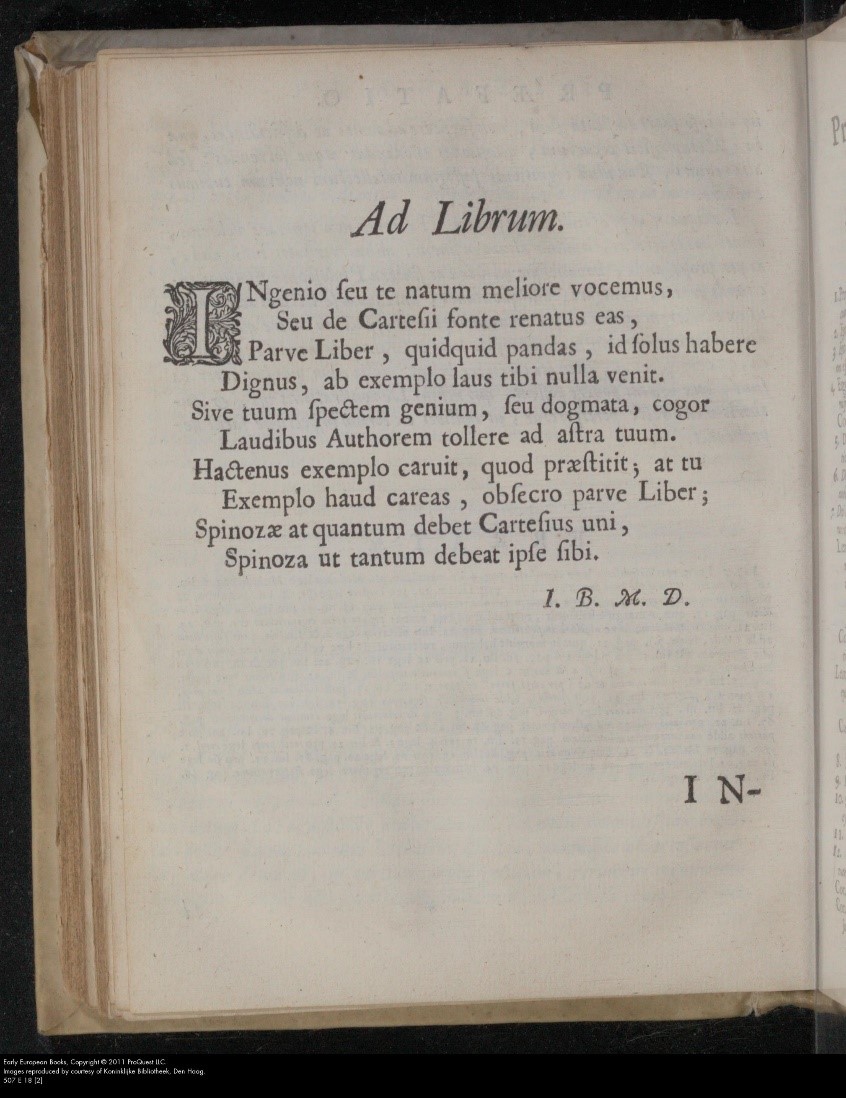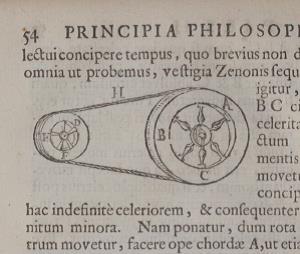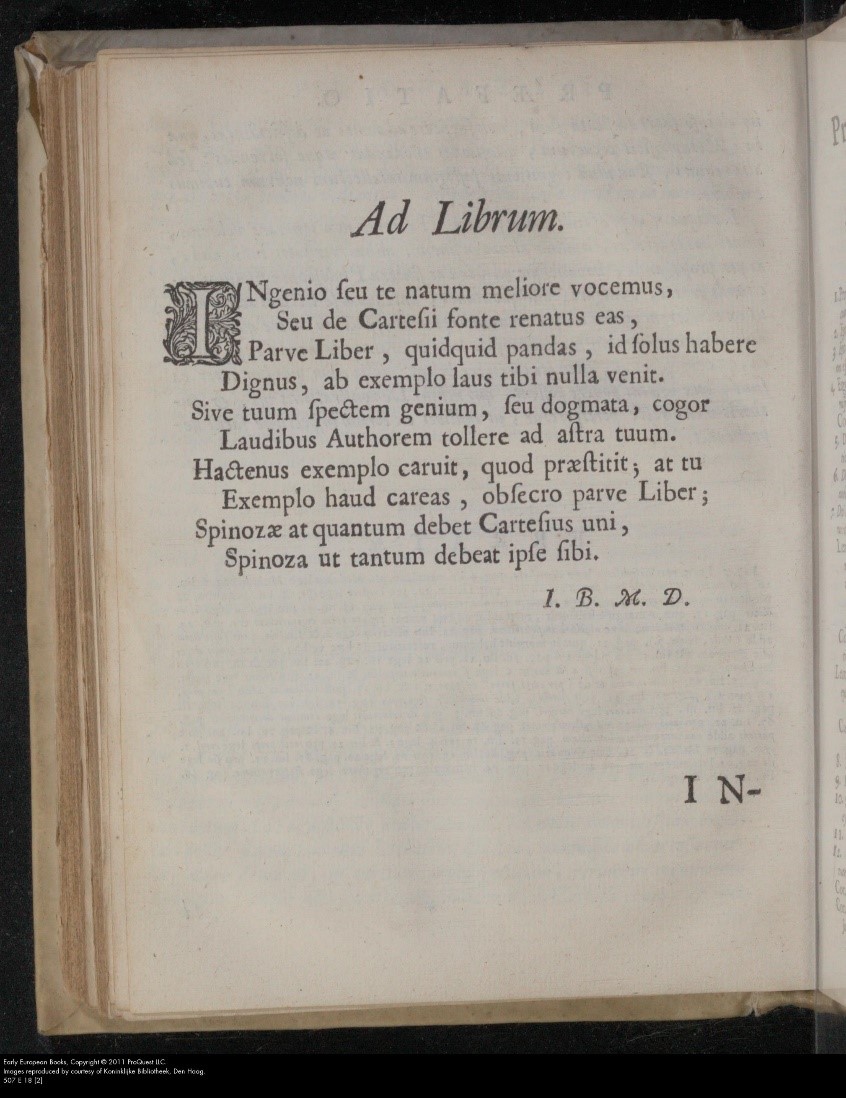- Date
- 1663
- Collation
- 4to: *4 **4 A–R4 S2 [$3 (–M2 (part-title leaf)), S: $2 signed]/78 leaves = pp. [16] 1–140
- Fingerprint
- 166304 – a1 *2 ue$hin : a2 ** gine$pro / 166304 – b1 **2 natura : b2 **3 tur.icul / 166304 – c1 A pr : c2 M ngu / 166304 – d1 M3 licet$i : d2 S2 tate
- Variant
- No variant known
- Publisher
- Jan Rieuwertsz Sr
- Trans., Ed.
- Lodewijk Meyer
- Location
- Amsterdam, ‘in ’t Martelaarsboek’, ‘Dirk van Assensteegh’
In the early 1660s, Spinoza’s Amsterdam friends and admirers urgently implored him to complete, refine, and also publish his first major writing project: an alternative interpretation of Descartes’s ‘Principles of Philosophy’ (1644). Spinoza originally started that propaedeutic project in the form of private lessons (selections from Parts 2 and 3 of ‘Principles of Philosophy’) taught in early 1663 to a young Leiden student, called Johannes Casearius, who temporarily also lived in Rijnsburg in the house of painter Daniel Harmensz Tydeman. He willingly complied with their wish and presented this work to them in a geometrical form (instead of Descartes’s rather informal prose), a comprehensive enterprise brought to a head in his first book Renati Des Cartes Principiorum philosophiae pars I et II; Cogitata metaphysica.
Spinoza cleverly billed this geometrical reorganisation as a strict rationale of Descartes and of his noted method of doubt that radically ruled out any topic of divine providential purpose in his study of nature. Most significantly, he also appended to it his own critical neo-scholastic metaphysical moorings about the notion of being and the intrinsic nature of God—left aside by Descartes—in the annex Cogitata metaphysica.
Spinoza in a letter of July 17/27 July 1663, promised Henry Oldenburg to send him soon either a printed copy of Renati Des Cartes Principiorum philosophiae pars I et II; Cogitata metaphysica ‘or a written summary of it’. Should you want one or two copies of that very work ‘now in the press’, he writes to his London-based correspondent, ‘I shall comply with your wish as soon as I learn of it and of a way I can conveniently send the work to you’. From this intriguing statement, it can be inferred that by then portions of Spinoza’s digest of Descartes were being processed in Amsterdam.
Order of composition:
- Part 2 (‘about God, his Attributes, and the human Mind’, on the foundations of Cartesian physics), plus a fragment—two propositions on shapes of matter and on the laws of nature, motion, rest and collision—of Part 3, compiled in Rijnsburg in 1662/1663, prepared for the press sometime between 21 April and mid-August 1663, after a brief visit to Amsterdam
- Part 1 (‘concerning Being and its Affections’, an adaptation of a variety of Cartesian sources, including arguments arranged to prove God’s existence, and on the distinction of the body and the soul, without matters of logic), written in Amsterdam within a period of two weeks after completion of Part 2
- cross references and captions, all written by editor Lodewijk Meyer before early August 1663 under personal direction of Spinoza, added to the matured Cogitata metaphysica
- Preface, made by Meyer, before early August 1663
Annotations
Features
- Latin text
- first and only edition, in quarto
- prepared for the press by Lodewijk Meyer, in consultation with Spinoza
- title-page has Spinoza’s name
- imprint with the name of Jan Rieuwertsz Sr, the address of his bookshop (‘Dirk van Assensteeg’) and sign (sub signo Martyrologii)
- title-page has ornament
- prologue by Lodewijk Meyer
- dedicatory poem ‘Ad Librum’ (sig. **2r) by ‘I.B.M.D.’ (presumably by Johannes Bouwmeester)
- contains decorated initials and illustrations
- contains indexes and list of errata
Spinoza’s manuscript, and/or an apograph (with editorial interventions by Meyer), served as the printer’s copy, but is no longer extant.
Latin, occasionally pointed Hebrew (p. 120). Glosses in external margins (italics). Undistinguished movable roman type from the Amsterdam printing office of Daniel Bakkamude (Jagersma and Dijkstra, pp. 290–1).
Spinoza’s friend the Amsterdam doctor of medicine Johannes Bouwmeester is credited with having composed the dedicatory poem ‘Ad Librum’ (sig. **2r) which can also be found in the Dutch translation Renatus Des Cartes Beginzelen der wysbegeerte, I en II Deel; Overnatuurkundige gedachten). That disguised Latin panegyric (10 lines), in which the author expresses hope that Spinoza one day would expound his own work like he also did with the work of Descartes, is only signed ‘I.B.M.D.’ (‘Iohannes Bouwmeester Medicinae Doctor’).
Literals/misprints
- ‘difficiliores’ on title-page misses dot on third i: ‘Diffıcıliores’
- p. 137: running headline ‘PARS II. Cap. XII.’ lacks spacing: ‘PARSII. Cap. XII.’; not indicated in the list of errata
Illustrations
- 1 ornament (geometrical visual) on title-page, woodcut. Visual draws on *Descartes’s attempt made in Principia philosophiae to refute the theory of atoms (Principia philosophiae, 1644, II). The ornament on the title page is repeated as physical illustration on p. 58 (PP 2p9)
- 7 ornamented (acanthus) initials (M, I, A, P, P, D, J), woodcuts
- geometrical visuals, copper etchings
- physical illustrations,copper etchings, all in the Second Part of the ‘Principles of Philosophy’
References
Wolf, 1715-33, vol. 1, p. 240; Trinius, 1759, p. 419; Graesse, 1859-67, vol. 6, p. 470; Van der Linde, 1871, p. 1, no. 1; , Catalogue, no. 150 (Wolf), p. 32, no. 356; Catalogus,1965, p. 35, no. 184; Kingma and Offenberg, pp. 4–5, no. 1.
